In the shade of a tin-roofed shed with cool brick floors, our hosts laid out lunch. The rustic buffet table was made from recycled doors. At the near end of the spread, beside a stack of plates, a kaleidoscope of camellias in a jar jockeyed with the food for attention. We were seven food pilgrims and plant lovers from the Carolinas—South and North—friends eager to experience a 17th century farmstead and its celebrity gardener.
A platter of chopped chard and kale, pulled from the garden that morning, glistened before us. The greens had been massaged with homemade vinaigrette and topped with feta, pomegranate seeds, and roasted almonds. Navel oranges had been “suprêmed,” the chef explained. The highfalutin verb, we learned, was just a term for removing every stitch of pith from the sweet citrus meat.
Susan Walker Hlavin, a professionally trained chef and neighbor, had been commissioned to provide this al fresco feast. She stepped down the line to elaborate on the other handsome dishes set out—a pyramid of butter croissants, stuffed with fresh chicken salad, “lightly flavored with tarragon,” she said, “but nothing fancy.” At the far end of the table, a dish of “energy bites” would serve as dessert. This concoction, rolled into golf-ball-sized treats, had been fashioned from “oats, flax seed, coconut flakes, chopped Montmorency cherries, dark chocolate, a little honey, and a little peanut butter,” Susan said.
We filled our plates and carried them to sit at bistro tables under the mammoth arms of a leafless pecan. Nearby, another pecan tree with low-swooping limbs was draped with a cascade of pyracantha vines pouring forth with berries—a natural bird feeder, still expanding in bright sun. It was late February, but in the Midlands of South Carolina, the temperature would soon be in the eighties.
Augustus Jenkins Farmer, III, our host for this pilgrimage, is known in these parts as a horticultural force. Jenks and his partner Tom, a beekeeper, along with Jenks’s mother, Gloria, are the stewards of five-plus acres with a deed that dates to the 1850s. The first American born botanist, William Bartram, once visited the area, including nearby Silver Bluff, now a 3,100-acre wildlife refuge that runs alongside the Savannah River.
Around us, forsythia bloomed and clumps of daffodils and a few snowdrops outlined edges where the oldest outbuildings once stood. A cluster of fig bushes of several varieties rose from the middle of the flower garden. Jenks explained that at one time the figs were surrounded by a spiraling boardwalk that allowed children to pick fruit from the highest branches on down. The angelica plants were ankle high. Above them, a dense spreading shrub with red berries called butcher’s broom (Ruscus aculeatus) gave the angelica the shade it needed to get started.
The antebellum two-story that was Jenks’s childhood home sat at the edge of the pecan grove with towering magnolias in the middle distance. Casualties of the Revolutionary War are rumored to be buried beneath the house’s foundation.
In the 1960s Jenks’s father and namesake landed a job at a paper mill on the Savannah River, and the family moved into the sagging house, which they jacked up and managed to upfit with more than the single bare light bulbs that had been hanging from strings in the center of each room. The family raised their own food and constructed gardens and outbuildings from mostly recycled and found materials. The living conditions remained modest throughout Jenks’s childhood. Until he went to Clemson University to study plant and environmental sciences, he had never taken a real shower nor slept in an air conditioned room.
Following college, Jenks began to ply his trade as a plantsman. He was director of Riverbanks Botanical Garden in Columbia, SC, and founding horticulturist at Moore Farms Botanical Garden near Lake City in the Pee Dee Region of the state. Finally he returned home to launch his garden design business. The farm also supports a thriving mail order trade in plants, mostly organically grown crinum lilies, an historic species of sun-loving, shrub-sized bloomers that grow from underground bulb clusters. Some varieties live long and eventually weigh in at 40 pounds.
Crinums are often found in ditches and abandoned homeplaces in the region. Though they are hardy and persistent, the lilies fell out of favor with gardeners for a time, but Jenks and his chief crinum cultivator, Cole Mitchell, have devised new ways to foster and hybridize crinums for most any habitat. Sales are brisk.
“Some of these crinums,” Jenks said, “reproduce bulbs like a litter of kittens. Others are slow. Some need neither dirt nor water. They can sit on top of the ground to bloom. But the new cultivars that Cole is developing will take 10 to 12 years before they are ready to be named and sold.”
For his part, Tom manages the shipping side of the business in a former chicken coop, creatively packaging the bulbs in colorfully painted wrapping paper. Matthew Morris manages the farm’s website and social media presence. Two resident donkeys, Buck and Justine, discourage visits from coyotes and foxes.
During our tour of the outbuildings, Justine broke into a mournful bray loud enough to blot out the gurgle of bluebirds above. She was expecting any day now, Jenks said—another seasonal feature of the eclectic farmstead.
Jenks has built a solid reputation as a speaker and author, and he and Tom also keep a residence in the state capital, Columbia, a little over an hour away. Jenks’s masterwork, Deep Rooted Wisdom: Skills and Stories from Generations of Gardeners, followed his first book, Funky Little Flower Farm, in which straightforward stories are organized like an almanac. His writing is passionate and never fussy, full of big ideas and common sense about the natural world, with a depth suitable for newbies and seasoned gardeners.
As we walked the rows of lilies, we could admire the buildings from a distance, all decorated with joyful expressions of color and artifact. Cole gave us a lesson in crinum lily propagation, and Jenks showed us the natives and exotics he was growing for garden designs to be completed later in the year.
When we returned to the area near the shed/greenhouse/wine cellar where we had begun, we spied a rusted typewriter table beside the fence. It had not been there before. Someone had set out shot glasses and an old-fashioned citrus juicer made of glass.
“We have one sweet lemon left on our plant,” Jenks said, smiling as he pointed to a plump yellow-orange globe hanging in a waxy web of dark green leaves that were threaded through the fence. None of us knew this species of lemon—Citrus sulcate—also known as Sanbokan. “It’s like lemon candy,” Jenks said. He pulled the lone fruit, nearly as big as a soft ball, and with a pocket knife, cut it in half.
“I tasted this first in the Dominican Republic and fell in love with it,” Jenks explained. His sister’s friend told him the lemon was not cold hardy and wouldn’t grow on his farm but gave Jenks a plant anyway. The lemon has now been spreading on the fence for 15 years and provides some 30 lemons every winter.
The seeds were large and plentiful at the core. “The rind is thick and good for zesting,” Jenks added. Circling around the typewriter table, we all picked up the heavenly scent. We clinked shot glasses, toasting our new friends for their productivity and perseverance. The sweet taste was pure lemon without the usual astringency. Someone mentioned limoncello, and Jenks confessed he has also made the liqueur successfully from this fruit.
As we prepared to go, we bowed to our hosts, knowing that we had been the recipients of an uncommon tour. We had seen the bare bones of the garden, like a trellis without vines, all before spring rared up and flaunted its colors. And we caught the family in a casual dormancy, resting a bit before the busy season of bulb orders and the daily chores of weeding and harvesting.
As Jenks likes to say, he “wants to help people see the fantastic in the ordinary.” The purple martins, Jenks said, should arrive any day now and take up residence in the collection of gourds hanging high in the field. The migratory flock will settle in for a while, coming out of their nests to watch the family work the garden. Then they’ll have their babies in the gourds and depart for the annual convention of thousands of purple martins, swarming on an uninhabited island in Lake Murray, near Columbia. And now, I want to see that example of the fantastic ordinary, too.





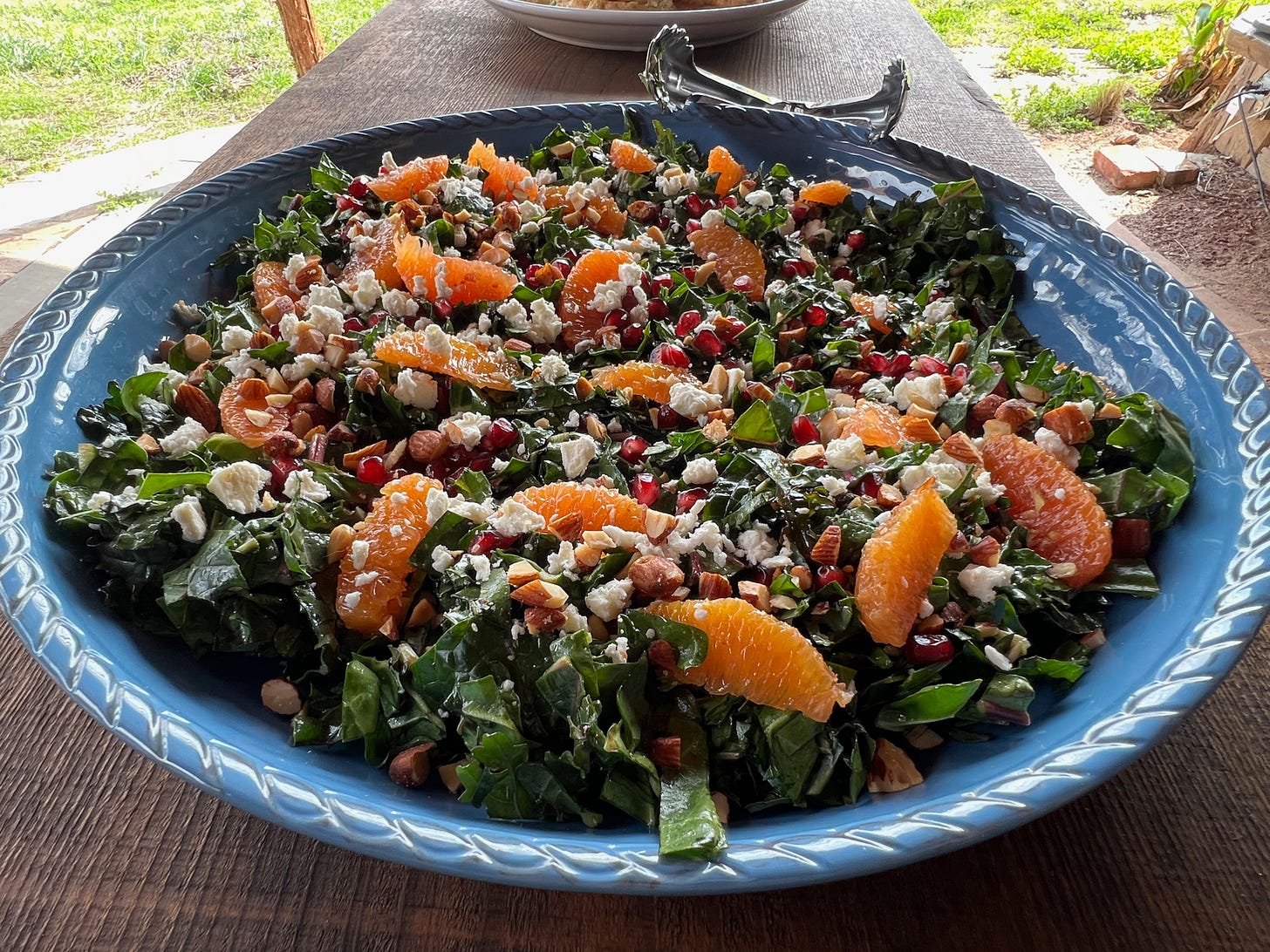

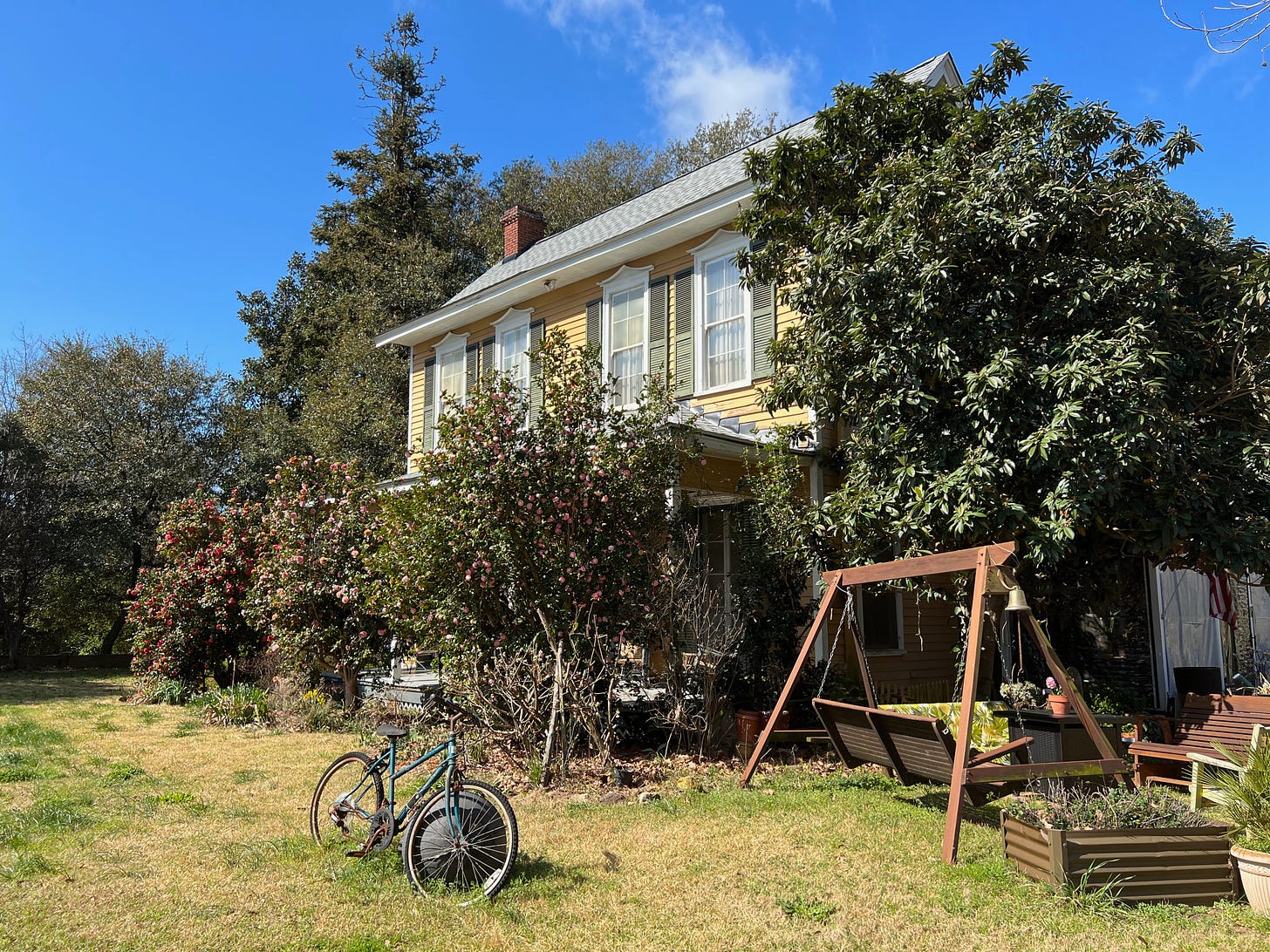
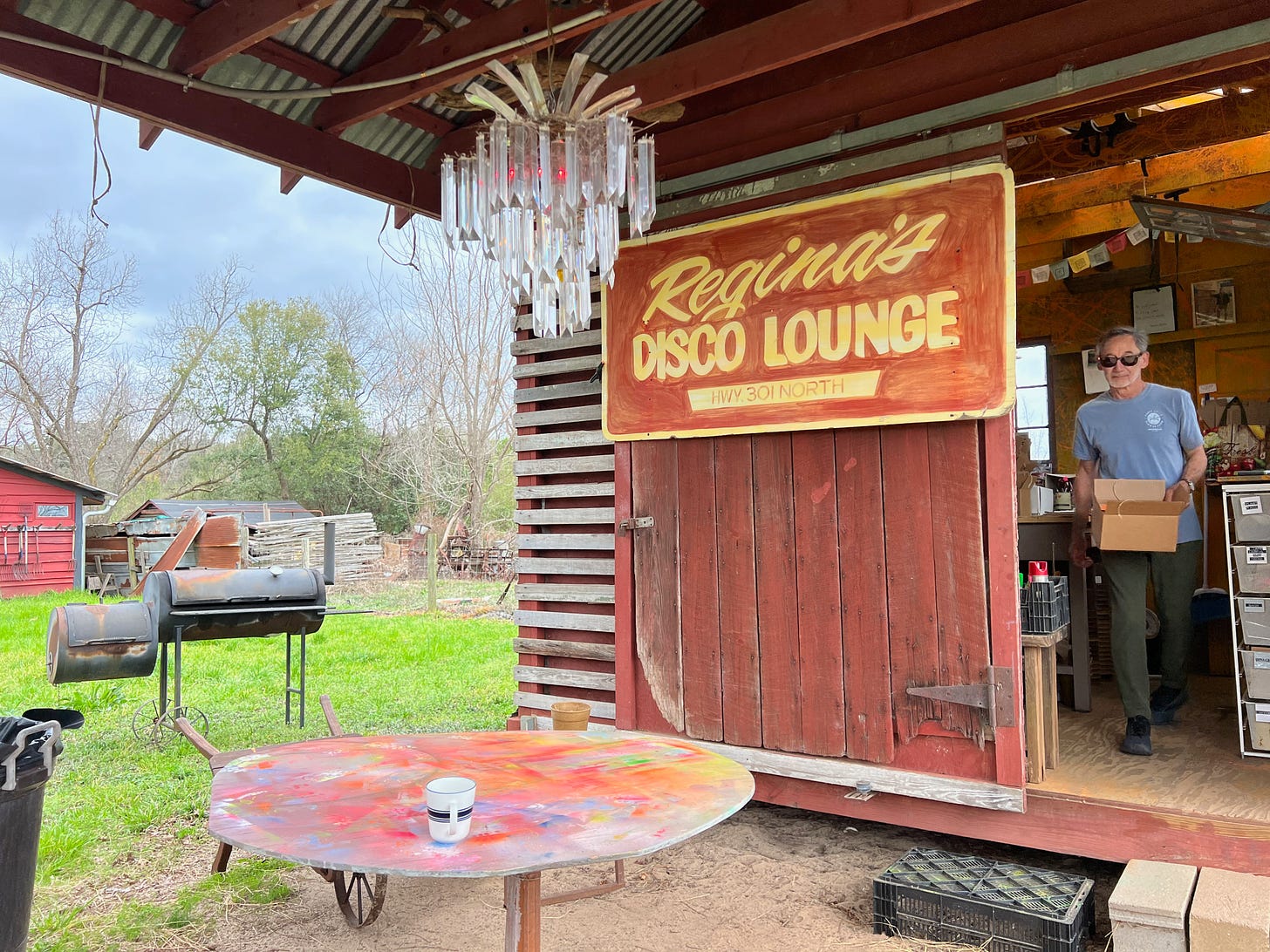
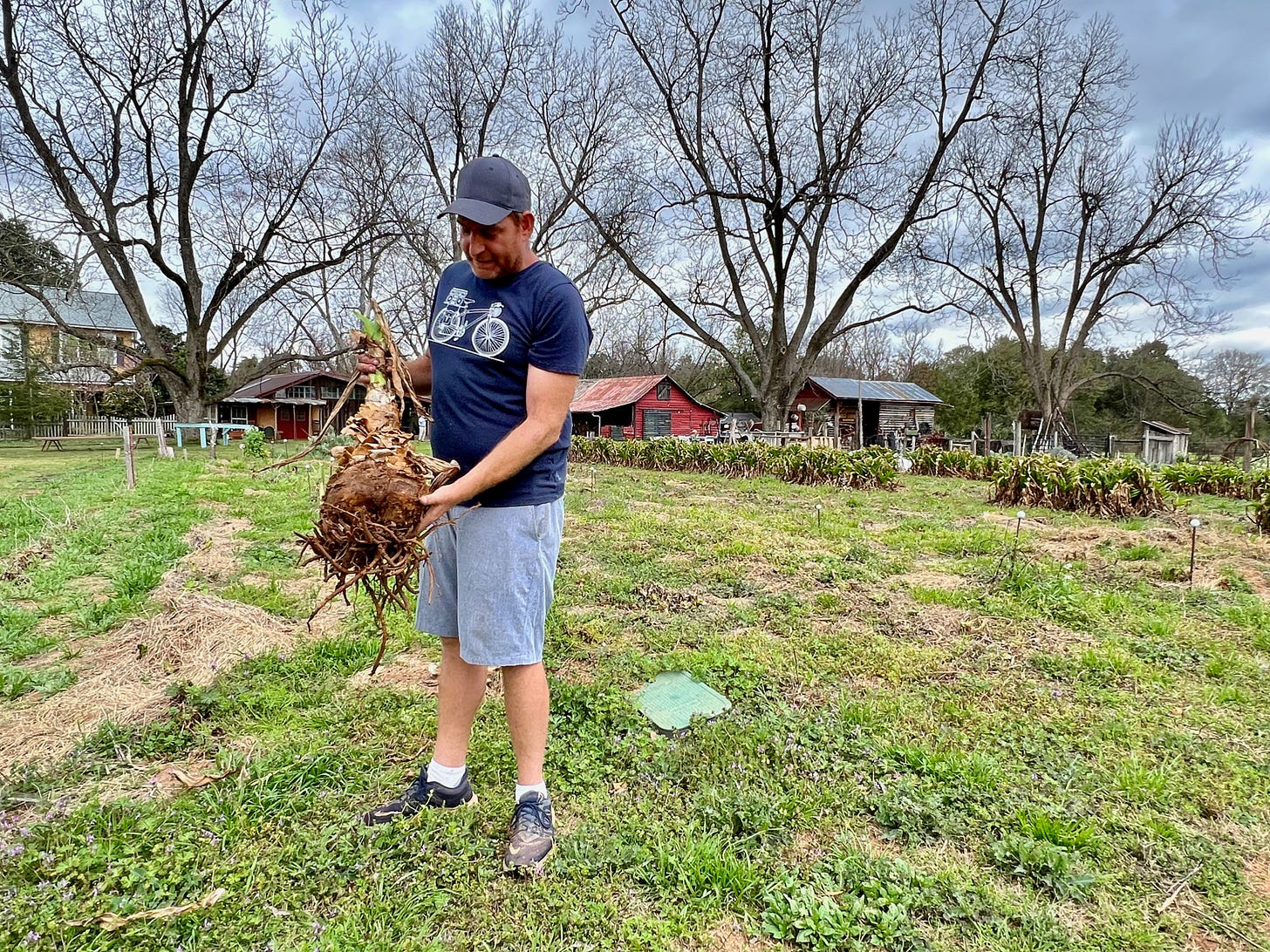
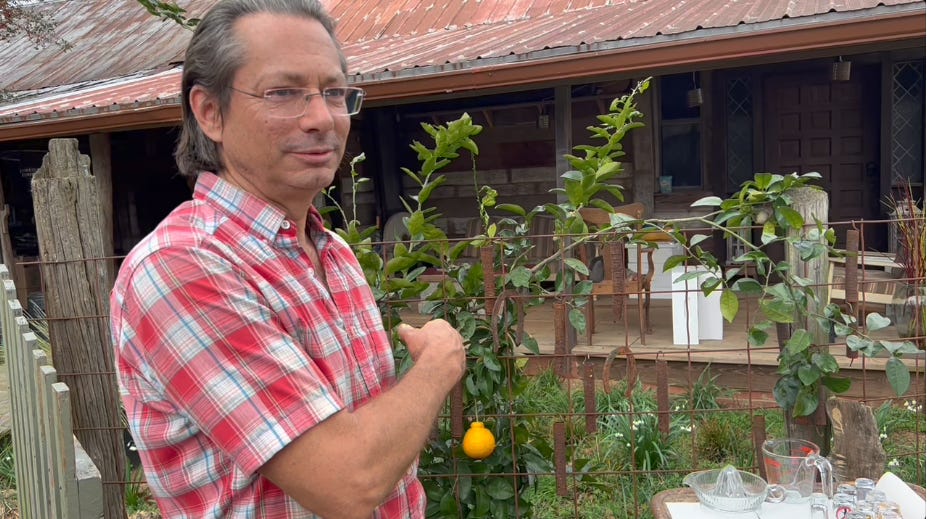
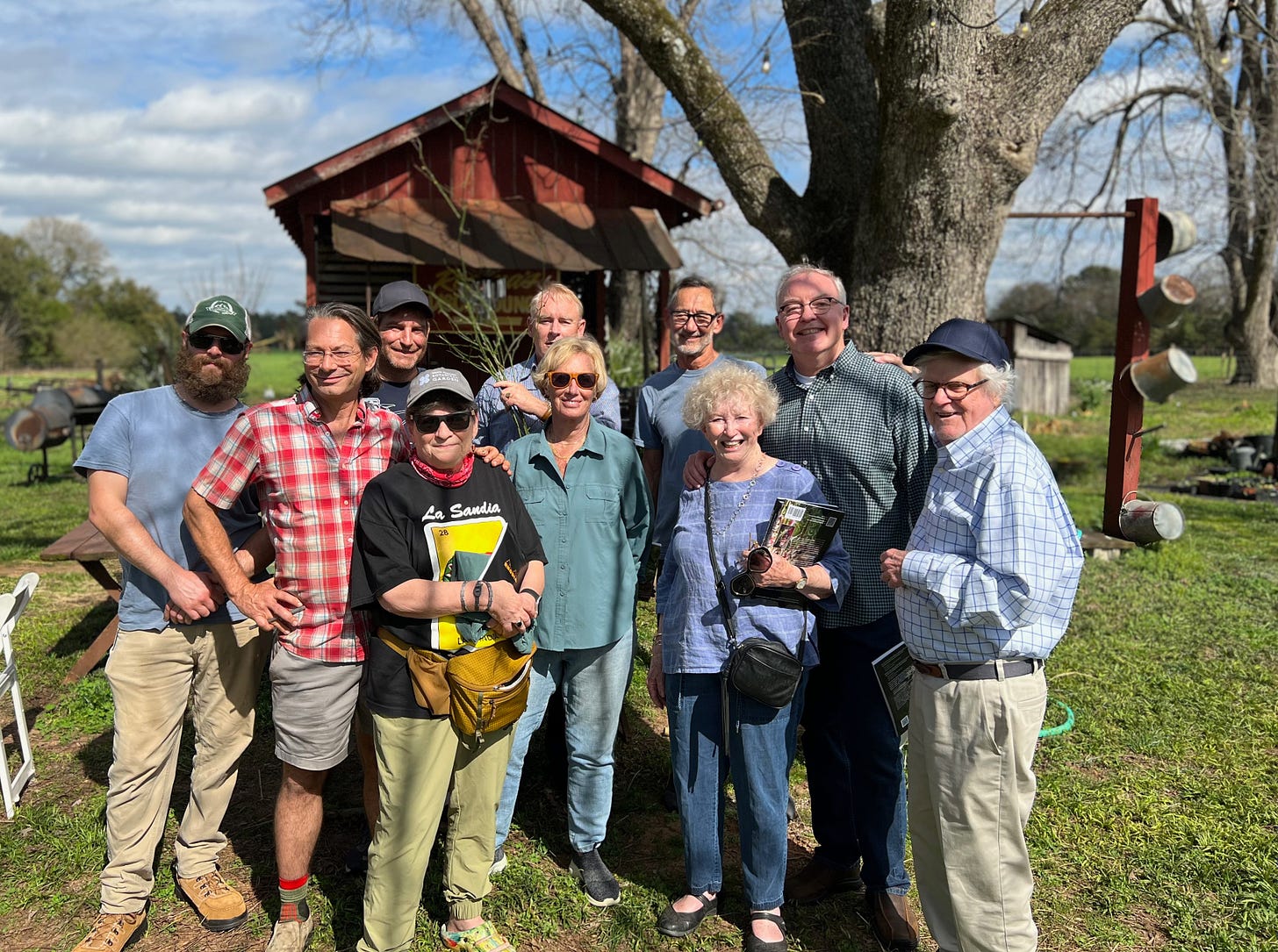
My husband and I always enjoy your Food Pilgrim posts, and I share them with my FB friends!
We need some of those energy bites at Table Rock!